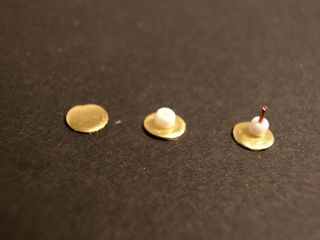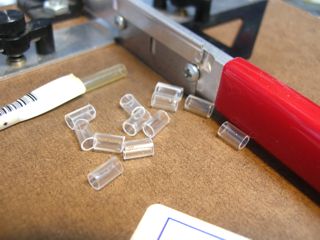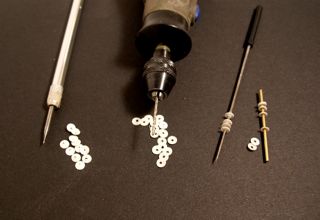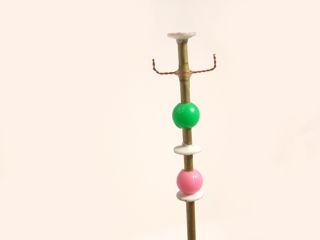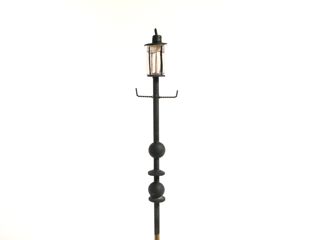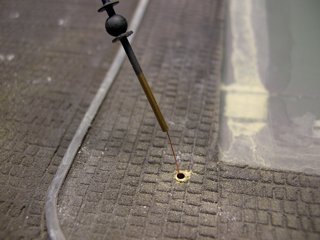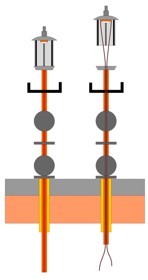
It's a basic building method: A thin tube has enough room for two very thin wires and holds some ornaments.
The light source is placed in a transparent tube, with a nice cap on top.

I used the narrowest tubes I could find. The slightly thicker one will make it easier to insert the lantern in the layout. This should have at least the length of the thickness of the layout base it will be mounted in. The thin tube should measure at least 1 cm more then the desired height of the lantern base. Cutting is done with a disk in a minidrill, and the same disk can be used to soften the cut edge.

I used the very small SMD's: white 0603-sized ones. These have surface dimensions of 0,75 to 1,5 mm. To attach a wire to them, they should be fixed. Painter's masking tape is a good choice, as you can stick several smd's on them, at least long enough to solder some wires to them.




